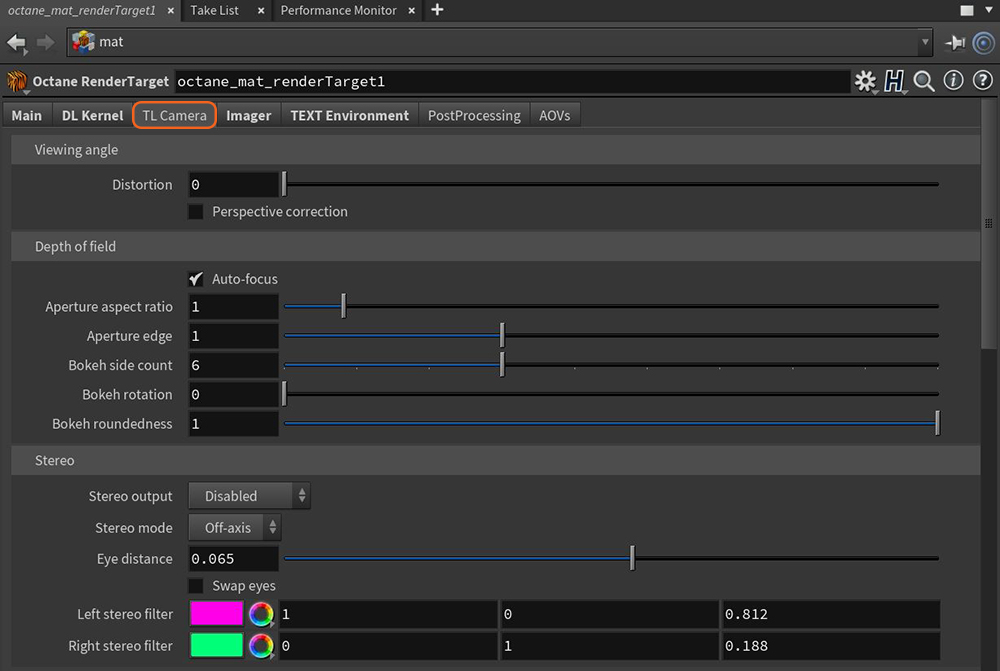
When you select Thin Lens as the camera type in the Render Target's Main tab, the following parameters are available in the TL Camera tab (Figure 1).

Figure 1: The Thin Lens camera parameters
Distortion - This adjusts the spherical and cylindrical distortion. The rendered image displays the entire sphere and uses equidistant cylindrical projection.
Perspective Correction - If the camera's up direction in the scene is vertical, enabling this option keeps vertical lines parallel.
Auto-Focus - If enabled, focus is kept on the closest visible surface at the center of the image, regardless of the ApertureDetermines how much light enters a camera lens. A large aperture produces a narrow depth of field and a small aperture produces a wide depth of field., Aperture Edge, and Focal Depth values.
Aperture Aspect Ratio - Squash or stretch the depth-of-field disc.
Aperture Edge - This controls aperture edge detection at all points within the aperture. Lower values give more pronounced edges to out-of-focus objects affected by a shallow depth-of-field. Aperture Edge modifies the bokeh effect of the depth-of-field. High values increase the contrast towards the edge.
Bokeh Side Count - The number of edges that make up the bokeh shape.
Bokeh Rotation - The bokeh shape's orientation.
Bokeh Roundedness - Determines the roundness of the bokeh edges.
Stereo Output - This specifies the output rendered in stereo.
Stereo Mode - Choose Off-Axis or Parallel stereo camera projections.
Eye Distance - The distance between the left and the right eye in stereo mode, measured in meters. The stereo distance is also referred to as the IPD (interpupillary distance), or stereo interocular distance or eye distance. For realistic depth, use values between 0.055 and 0.075.
Swap Eyes - Swaps the left and right eyes in the rendering.
Left/Right Stereo Filter - The left and right filter colors adjust the colors for the anaglyphic stereo effect in the render.